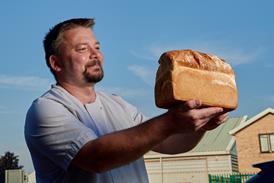Pizza: finding new ways to deliver the goods

The pizza market is changing as consumers demand a hot and tasty meal at the click of a button. So, how are pizza players reacting?
To continue reading, register for free
You are what you read, registration is quick, easy and free. Just click register now and you’ll be finished faster than it takes you to butter a crumpet!
Don’t miss out:
- Unlimited access to content
- Regular newsletters to your inbox
- Save articles to read later on
- A more personalised experience
Already registered? Please log-in here


















